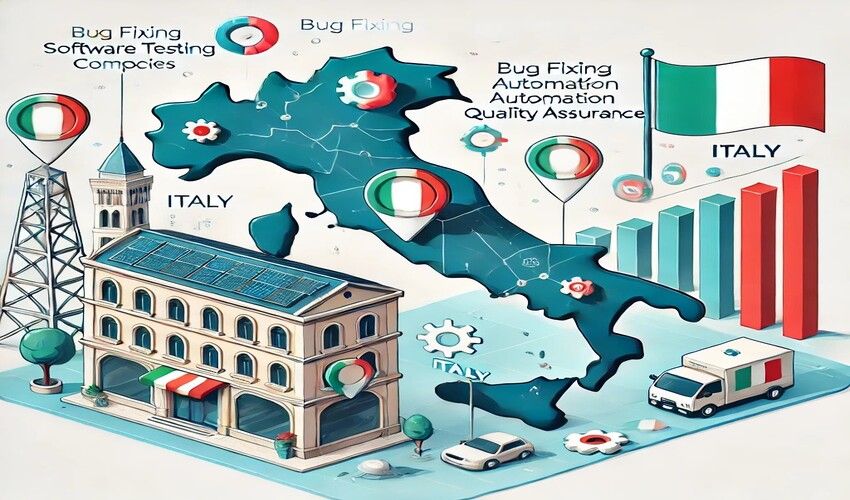Innovation is one of the key elements that determines the success of modern enterprises. The flexibility of deploying new solutions is critical to the existence of a company is important. This is where we see the Power Apps Development Services to be of great help as they change how companies tackle the issue of prototyping and app deployment. When complemented with Power Automation Development Services, Microsoft Power Apps help organizations develop bespoke apps at a rapid pace.
Research shows that companies that use Power Apps achieve an 188% return on investment in 3 years. This impressive statistic speaks volumes about the capability of Power Apps as an effective tool for enhancing the innovation process. Power Automate Consulting Services and Power Apps Consulting are essential to helping companies unlock the power of the Power Platform, make their processes more efficient, save money, and deliver new solutions to market faster. Read on to find out how Power Apps can be your key to starting to grow big and innovating at a breakneck pace.
Understanding Power Apps
Power Apps is an application that helps businesses effectively manage their operations, enhance efficiency, and foster innovation since it can help users create and deploy apps without having to bother with the technicalities.
There are several categories of apps you can build with Power Apps:
1. Canvas Apps
Canvas Apps is a more customizable and versatile type of app that lets users build the app’s structure and design on a canvas, using drag-and-drop functionality to position controls and other objects. As indicated, Canvas apps are best suited for developing solutions that are centered on a particular task and that involve an interface that is different from conventional applications.
2. Model-driven Apps
Model-driven apps are data-centric, meaning the architecture of the app is derived from the data model that has been chosen. These apps are created with a component-based solution, which defines a better structure and flow of development than the Canvas Apps.
3. Portals
Portals in Power Apps allow the creation of web applications that are accessible to people outside the organization but provide access to internal data only. These portals can be implemented to serve unique purposes, such as customer support interfaces, community platforms, or partner interfaces.
Power Apps Development Services
Power Apps Development Services refer to a set of tools and processes that assist organizations in developing unique applications quickly. These services build on the Microsoft Power Platform and use low-code development to deploy apps quickly and integrate them into existing systems.
Key components and tools involved in Power Apps
1. Power Automate Development Services
Power Automate Development Services is an essential part of Power Apps that lets users build the flows that connect apps and services. Such automation contributes to effective time management, saves time on tasks like data entry or approval that would otherwise require human input, and can also be prone to mistakes.
2. Common Data Service (CDS)
The Common Data Service is an operational data management service that is part of the Power Platform, which was previously called the Microsoft Dataverse. Its main purpose is to store data securely and on a large scale. It allows users to govern and archive data utilized by business applications by offering a single data structure that can be utilized by numerous apps.
3. AI Builder
AI Builder is one of the elements of Power Apps that can be employed to introduce artificial intelligence characteristics into an application. Therefore, by utilizing existing AI models or training new ones, companies can apply AI models to solve complex tasks, such as sentiment analysis, object detection, and form processing.
The Role of Rapid Prototyping in Innovation
Rapid prototyping is a technique used in product development whereby a full-size but reduced product model is produced to evaluate its functionality and design intricacies. This makes it possible for businesses to test their ideas, get the general perception of their products or services from the market, and make improvements before going to the market fully.
How Do Power Apps Support Rapid Prototyping?
Power Apps helps in supporting rapid prototyping as the development platform provides a no-code/low-code interface, and users can build applications with little coding skills. This enhances app development efficiency in prototyping since the more people involved, including those with little programming knowledge, the better. Power Automate Development Services builds upon this advantage by automating the development process and merging multiple data sources to create an efficient process. Such tools’ synergy allows creating, testing, and fine-tuning the application within a short time, thus minimizing the time from the idea to its implementation.
Real-World Examples of Power Apps for Rapid Prototyping
Power Apps Development Services has helped many organizations prototype and deploy new solutions effectively. For instance, a healthcare provider can create a prototype solution using Power Apps to build a patient management application. They managed to consolidate patient data from several sources using Power Automate Consulting Services, thus allowing healthcare professionals to get more information about their patients. This initial design was further enhanced based on the users’ feedback and was later implemented, leading to enhanced patient care and better functioning.
Also, the manufacturing company applies Power Apps to create a toy prototype of the inventory management application. Through Power Apps Consulting, they developed the basic prototype in just a few days, and it proved to be a great tool to demonstrate the functionalities to the warehouse staff and get their feedback. By the third iteration, the final app was developed to enhance inventory tracking and minimize errors, alluding to the essence of rapid prototyping in encouraging changes in operations.
Benefits of Using Power Apps for Rapid Deployment
1. Speed and Efficiency in Deploying Apps
Another advantage that goes hand in hand with Power Apps Development Services is the capability to deploy applications in record time. Classic app creation can take months or even years to go through coding, testing, and deployment stages, which hinders the launch of vital business apps.
2. Cost-Effectiveness of Power App Development
Power Apps Development Services are a more affordable option than traditional methods of app development. The concept of low-code in Power Apps means that even non-technical employees, including existing staff, can be involved in the creation of an app since coding expertise is not as crucial.
3. Scalability and flexibility
In terms of scalability, flexibility, and adaptability, it is impossible to deny the fact that Power Apps are suitable for growing businesses. The platform allows for the development of applications across a range of scopes, such as basic automation of tasks or comprehensive management of company processes.
Wrap-Up
Power Apps for Rapid Prototyping offer an effective solution for creating and implementing new and unique applications. They are suitable for developing and testing applications within a short time frame. With the help of Power Automate, Common Data Service, and AI Builder, it is possible to create cost-effective, elastic, and effective apps for organizations.
I’m Nathan Johanson, a Senior Technical Consultant at atQor, a leading Microsoft Solutions Partner in the USA. With extensive experience in enhancing technological frameworks, I provide tailored solutions to help businesses overcome unique challenges and foster growth. Our expertise includes Power Apps Development Services, ensuring streamlined automation and increased efficiency for your business processes.
















Leave a Reply